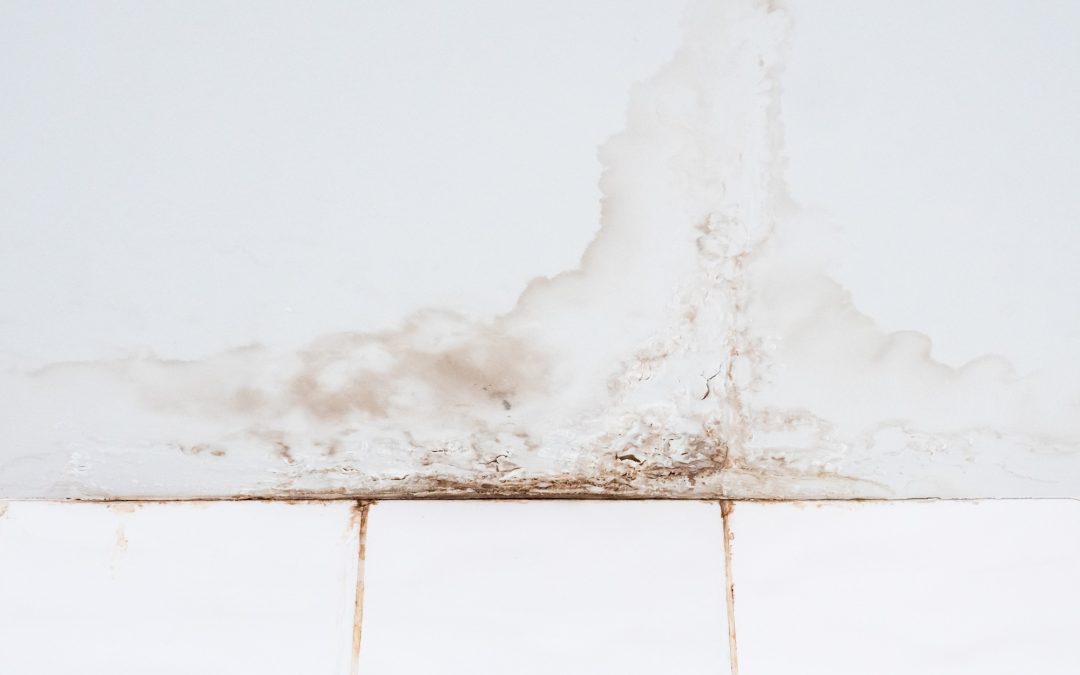Drywall: it’s the most common building material in practically every home, one we don’t give any thought to. But this gypsum board has a history far more interesting than a passing glance will reveal. Augustine Sackett patented it in 1894, and since then, it revolutionized the homebuilding industry.
These days, you can find an average of 6,000 feet or so of drywall in each American home. It’s incredibly durable, affordable, and easy to paint. But it has one Achilles heel: drywall water damage.
Fortunately, the signs of water damage in the wall are easy to spot. Keep reading for your guide on how to identify wet drywall.
How Does Drywall Water Damage Happen?
It’s important to know what drywall is made of to understand how water affects it. Drywall’s primary component is gypsum, which you can also find in plaster. It comes in a powder form, which manufacturers mix with other materials and binders.
Although commonplace, drywall is very simple. All it is is baked, rock-hard gypsum sandwiched between two pieces of paper. This makes it comparatively light and easy to cut to size.
If you’ve ever roughhoused with your siblings and someone put a foot through the wall, you’ve seen what it looks like inside. It cracks easily and flakes into powder. Naturally, this makes it quite vulnerable to water damage.
Water soaks the containing paper and turns the gypsum into mush. This not only weakens the wall, but it’s also the perfect hotbed for mold to grow. Needless to say, wet walls can lead to serious problems and require wall repair.
All it takes is a trickle of water dripping down the wall. It soaks into the paper and the gypsum, spreading away from the epicenter. It doesn’t take long before half of the wall is contaminated.
How to Identify Drywall Water Damage
Luckily, this isn’t an issue that will be difficult to spot. The signs are pretty obvious, and here are some of the most common symptoms:
- Bubbly, flaky, and peeled paint
- Spiderweb or hairline cracks
- Water rings (particularly when in the ceiling)
- Mold growth
- Ceilings that bow or sag
- Discoloration from water stains, typically yellow or rusty in color
- Long, discolored drips
- Unpleasant, musty smells
- Soft drywall that gives to the smallest amount of pressure
If you see any of the above issues, call your local water damage cleanup service. Particularly if you observe these symptoms affecting a large area. If it is covering a quarter or even half of the wall, there could be a very serious issue.
What Are the Primary Causes of Drywall Water Damage?
Unfortunately, there is no one cause for soggy, wet drywall. It could be the result of a number of things. Here are a few things that are likely to cause water damage:
- Leaks from a roof in need of repair or replacement
- Excessive moisture and humidity in a certain area of the home, such as the basement
- A busted or leaking pipe
- Water damage from flooding, whether from pipes or from extreme weather
- Water damage from fire sprinklers
How to Remove Drywall
Let us be clear here: in most cases, replacing drywall is NOT a DIY project. This is for a number of reasons:
- Drywall is attached to studs, so improper removal could be affecting the home’s structural integrity
- Drywall is easy to break, so you could end up spending a lot of money if you accidentally crack several new boards
- It’s difficult to fit the new drywall in with old drywall
- Unless you do it perfectly, a patch job will be an eyesore
- You may not notice that a replacement job looks bad until you repaint it
- It can take more time than you would like, wasting precious time you could have spent elsewhere
Replacing drywall is relatively simple in practice. If you have any skill with repairing your home, then it will likely come easy to you. However, we highly recommend that you hire a professional.
Plus, you may not be able to identify the true source of the problem. You may succeed in replacing the drywall, only for it to get wet from a water leak not long after. It’s important not just to replace it, but to nip the problem in the bud that caused it in the first place.
Check for Drywall Water Damage Periodically
The problem with drywall water damage is that it can happen all of a sudden. All it takes is a single night for a water leak to soak an entire wall. If you don’t identify the damage soon after, it could get much, much worse.
That’s why we recommend that you check your drywall on a regular basis. Particularly after certain events that could lead to wet walls. If any of the following happens, double and triple check your drywall for water damage:
- After a particularly heavy storm
- If you spring a leak in the roof
- If you notice your water bill is uncharacteristically high with the same average usage–a sign of a potential leak
- If the sprinklers go off after smoke triggers the fire alarm
- If you experience minor or major flooding
- If your basement or another area of your house feels unreasonably humid
Hire The CleanUP Guys for Your Drywall Damage
Drywall is very susceptible to water damage, despite being a cheap, durable building material. Luckily, drywall water damage is very easy to identify. If you notice signs that a wall is wet, then contact a professional right away.
The CleanUP Guys specialize in water damage, mold removal, and much more. We provide 24/7 service for all of your emergencies. Contact us here in the event that you notice water damage.

